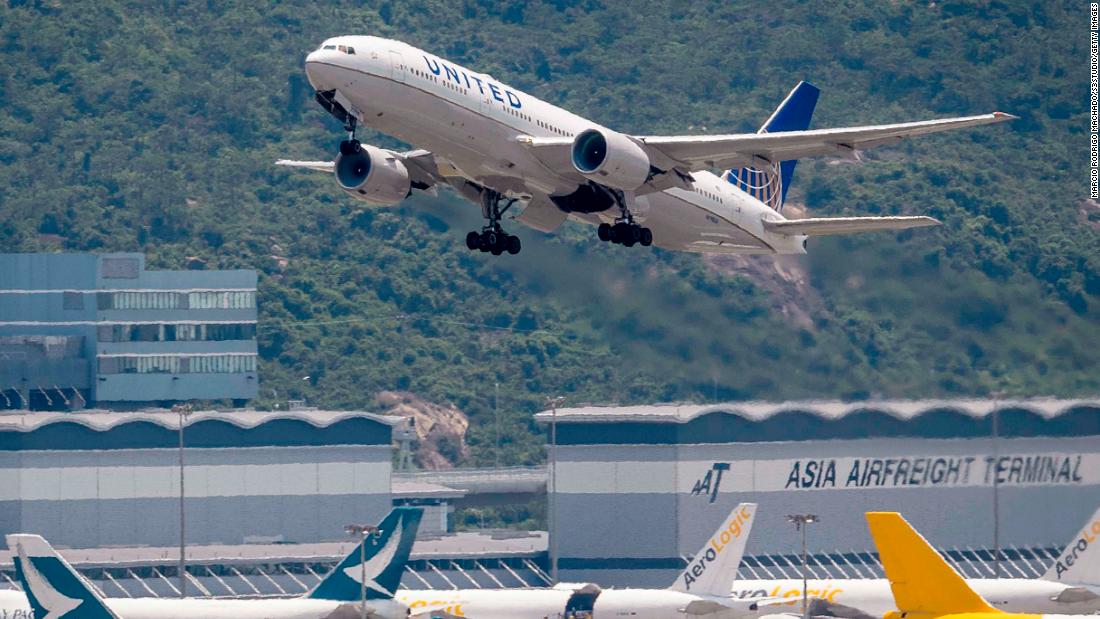Washington accused Beijing of preventing American carriers from resuming flights to China, prompting U.S. authorities to check Chinese airlines more closely.
Tit-for-tat began last week after the United States Department of Transportation said that Beijing regulators “were making it impossible” for US carriers to fly between the two countries.
The problem facing US carriers is that the CAAC, in an attempt to stop the imported cases of Covid-19, has ordered all airlines to use flight schedules for the week of March 16-22 as a parameter to determine how many flights China could operate until further notice. By that time, US airlines had “completely ceased passenger flight service to China,” according to the Department of Transportation.
The virus cases recently reported in China are few and the majority derive from those who return to the country elsewhere. Fear remains high among the public that China could see an increase in new cases if a large number of international flights could be resumed, especially from countries such as the United States, where the death toll is close to 100,000 and where confirmed cases have reached more than 1.6 million.
The CAAC did not respond to requests from United and Delta to resume operations, according to the US agency.
Meanwhile, several Chinese airlines have continued to fly US-China routes throughout the pandemic. But the Chinese aviation regulator has limited each of them to operate a single weekly flight to the United States.
The Chinese aviation regulator has told U.S. officials that they are considering removing the March benchmark, but the limit on a weekly flight to China would also be imposed on U.S. airlines. This would violate an air transport agreement between the two countries.
In response, on Friday, the Department of Transportation issued an order requiring Chinese airlines flying to the United States to submit flight schedules to the United States government, including details on the type of equipment used, the frequency of each flight, specific airports served at each point and the arrival and departure times.
Once these details are sent, the department will then determine whether the flights “could be contrary to applicable law or adversely affect the public interest”, according to the order. Chinese carriers – including Air China, China Eastern, China Southern and Hainan Airlines – are expected to submit the information by Wednesday.
Beijing on Monday denounced the new restrictions.
“China opposes any US measures that may interrupt or limit the normal commercial passenger flights of Chinese carriers,” said Chinese Foreign Ministry spokesman Zhao Lijian during a periodic press conference.
Zhao also rejected Washington’s claims that it prevented US carriers from operating in China, adding that the country’s measures are “open, fair and transparent”.
As part of its requirements for U.S. airlines, the CAAC also wants those carriers to take responsibility if any passenger arriving on their flights tests positive for Covid-19 in China, according to a person who is familiar with the issue on which he was not allowed to speak the record. This would also violate the countries’ air transport agreement.
In addition, Chinese carriers filed an unprecedented number of passenger charter requests – more than a dozen per week, the person said. These papers are organized by the Ministry of Foreign Affairs to repatriate Chinese students.
But the flights also carry Chinese commercial passengers to and from the United States, the person said. US carriers have been told that only Chinese airlines are eligible to provide these return services, the person said.
United declined to comment on the matter. United spokesman Leslie Scott said the airline is eager to resume passenger flights between the United States and China “when the regulatory environment allows us to do so.”
Delta did not respond to a request for comment.
China is an important international market for both U.S. airlines, according to John Grant, an analyst at the aeronautical analysis firm OAG.
Last May, China was United’s sixth largest international market based on the seats offered and the ninth international market for Delta, Grant said. In terms of overall capacity, however, China accounts for less than 1% of the total network of both carriers, as domestic flights represent the bulk of their activities.
Nonetheless, “access to China in the recovery from Covid-19 is important from both a passenger and freight point of view, and above all a broader catalyst for reopening global trade once again,” said Grant.

Coffee enthusiast. Travel scholar. Infuriatingly humble zombie fanatic. Thinker. Professional twitter evangelist.








